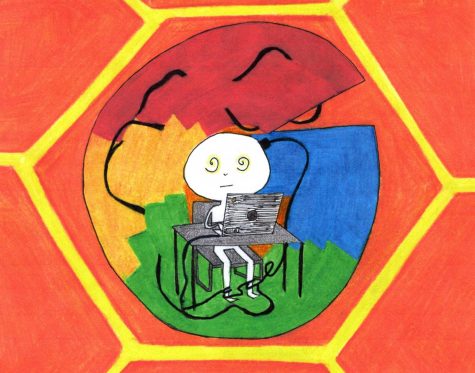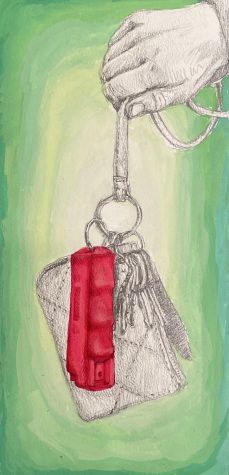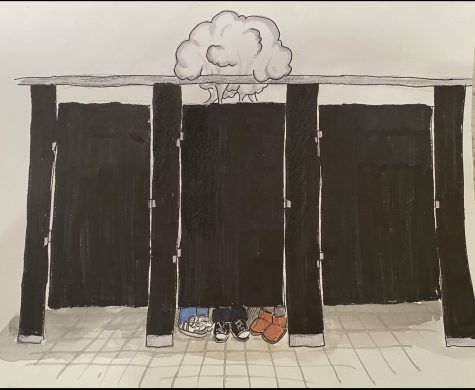Period Perception
It is the first day… again. You change into the baggiest sweats, swallow a pill from your trusted pain medication used only this week, find a “new” position in your puffy blanket, and fix the heating pad so that it fits you. And it is perfection.
Periods are tough, but due to these “luxuries,” they are not impossible.
However, when considering the amount of people who are low-income and may be homeless, periods are impossible. There are many people that do not own and cannot afford comfortable clothing, pads, tampons and many other products.
I would like to begin by addressing the fact that not every person who menstruates uses the term “woman” for identification, but to clarify this argument, I will be using the term “women” when addressing the population of menstruating people.
As we all know, America has many problems concerning taxes. We complain about them, blame each other for them, and finally, pay them. However, we overlook the “pink” tax, which is the tax put on feminine hygiene products, such as tampons and pads. These are the products that are considered “luxuries.” Where does this tax come from? And why is there a tax considering the high prices women pay for products already?
Unfortunately, there is no clear reason. In 45 states, women are paying more for the mere difference in the scent of the deodorant they buy, according to The Washington Post. And the people who are in control of these taxes are primarily men, who have obviously never had a period themselves or understand how a woman must handle menstruating month after month.
Due to this tax, many states generate up to $20 million a year, like California. This is great for individual state revenues, but it is not great for the women who are paying this amount or cannot pay it at all.
Dozens of articles call the “outrage” on this tax “overblown.” Headlines ask if this tax is “really that unfair.”
Now, I understand that the world works through profit. We buy products at inflated prices and we continue on with our day without question. But the price women pay is on another level of excessive.
On average, each individual person may pay $18,171 per year for feminine hygiene products, according to The Huffington Post. Keep in mind that teenagers are also expected to afford some of this amount and they usually cannot, especially when they come from low-income backgrounds.
For example, New York City has poverty rates up to 70 percent in their public schools and are just beginning to offer free pads and tampons in their schools. Chicago has similar poverty rates and has not made any policy to give out these products to girls who simply cannot afford them.
This is especially appalling when considering what products are given out for free: condoms.
Condoms are not a necessity. They are important, yes, and I am glad many high schools do not fill their students’ mind with statements of abstinence, but products needed for one’s period are just that — needed.
Similar to toilet paper, they are a necessity for a normal bodily function.
Having to use day-old pads and tampons, rags, and other inorganic or toxic cloth when menstruating is cruel. It is degrading a woman down to a helpless animal; someone who is not prominent enough to help. And it is refusing to see what society could be and buying into the ignorance that got us into the economy we already have. An economy where women are forced to pay for having a healthy and functioning body.
There are accessible ways to put an end to this nonsense. We must be kind to one another and understand that the world is about much more than profit. It is about helping others, especially when the system is unjust and uninformed by talking about these issues at school, at home, and at your workplace in an attempt to erase this social stigma around periods. It is about embracing the season and giving back to the homeless and less fortunate.
Please donate feminine hygiene products to the Feminine Care Product Drive at Lane and local homeless shelters.
Thank you!! We met our goal for the 2023-24 school year! Your contributions covered our annual website hosting costs, which are no longer covered by our district/school. Student journalists at Lane Tech use this archive to research past coverage of various topics and link to past stories to offer readers additional context for current stories. Thank you for supporting the award-winning reporting and writing of journalism students at Lane Tech College Prep!
Background information on why the school district no longer allows our school to cover web hosting costs:
https://lanetechchampion.org/12583/uncategorized/special-coverage-impact-of-soppa-on-cps-students-teachers/
https://lanetechchampion.org/11702/opinion/staff-editorial-cpss-soppa-policy-is-choking-students-learning-and-the-champion/

Anum Shafqat is the Editor-in-Chief of The Warrior. She has been pursuing journalism in high school for three years. With a love for television, red velvet...








